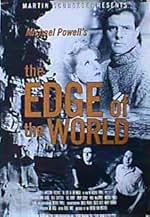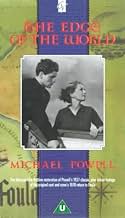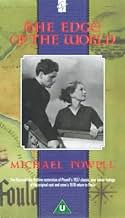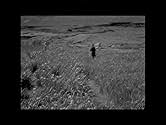IMDb रेटिंग
7.3/10
2.3 हज़ार
आपकी रेटिंग
अपनी भाषा में प्लॉट जोड़ेंA way of life is dying on a remote Scottish island, but some of the inhabitants resist evacuating to the mainland.A way of life is dying on a remote Scottish island, but some of the inhabitants resist evacuating to the mainland.A way of life is dying on a remote Scottish island, but some of the inhabitants resist evacuating to the mainland.
- निर्देशक
- लेखक
- स्टार
- पुरस्कार
- 1 जीत और कुल 1 नामांकन
Niall MacGinnis
- The Gray Family: Andrew, His Son
- (as Niall Macginnis)
James Garrioch
- Doctor Attending Ruth's Baby in Lerwick
- (बिना क्रेडिट के)
Andy Gear
- Villager in Evacuation
- (बिना क्रेडिट के)
Mima Gear
- Villager in Evacuation
- (बिना क्रेडिट के)
Wullie Gear
- Fiddler at Hirta Reel
- (बिना क्रेडिट के)
Aggie Jean Gray
- Member of the Congregation
- (बिना क्रेडिट के)
Agnes 'Nannie' Gray
- Member of the Congregation
- (बिना क्रेडिट के)
Edith Gray
- Member of the Congregation
- (बिना क्रेडिट के)
James Andrew Gray
- Member of the Congregation
- (बिना क्रेडिट के)
Jean 'Jeannie' Gray
- Member of the Congregation
- (बिना क्रेडिट के)
फ़ीचर्ड समीक्षाएं
What's it like to live on a treeless rock in the middle of the roiling north Atlantic. We get a pretty good idea from master film-maker Michael Powell who set up his camera in such a place with a few actors, a scant script, and actual residents as extras. And a heck-of-a movie it is. The result looks like something from the neolithic era, with its crude rock huts, long barren vistas, and a few hunkered-down plants, along with jagged cliffs rising out of the sea like the face of God. One thing for sure -- there's no lack of fresh air .
I can't imagine the movie was made for commercial potential. It resembles Robert Flaherty's gripping documentary of life in the Irish Sea, Man of Aran, which may be why Powell distinguished his effort with a story-line. But the visuals are quite similar. And that's fine, because the craggy vistas are unforgettable. This is close to movie making at its purest and most visual. In fact, on another viewing, I think I'll turn off the sound and simply gasp at the other-world imagery.
The story may be secondary, but it's appropriate. The few remaining islanders are leaving after centuries of habitation because of deteriorating conditions. There's a romantic complication, but thankfully it doesn't get in the way. A few scenes etch themselves in my memory-- the sheep dogs lined-up outside the crude church, the tiny mail-carrying boats tossed into the sea like wishes, but most of all, the overawing sea cliffs, endless in their poetry and power. It's got to be here that the earth meets the sky or whatever it is that's above.
Rather hard for me to believe that this spartan black and white was made by the same artist who made the splashy Technicolors of The Red Shoes and Peeping Tom. But Powell excelled at cinema regardless of format, putting him in the same league as the few other British masters like Alfred Hitchcock. But whatever the pedigree, this 80 minutes of air, rock and water remains a really compelling oddity.
I can't imagine the movie was made for commercial potential. It resembles Robert Flaherty's gripping documentary of life in the Irish Sea, Man of Aran, which may be why Powell distinguished his effort with a story-line. But the visuals are quite similar. And that's fine, because the craggy vistas are unforgettable. This is close to movie making at its purest and most visual. In fact, on another viewing, I think I'll turn off the sound and simply gasp at the other-world imagery.
The story may be secondary, but it's appropriate. The few remaining islanders are leaving after centuries of habitation because of deteriorating conditions. There's a romantic complication, but thankfully it doesn't get in the way. A few scenes etch themselves in my memory-- the sheep dogs lined-up outside the crude church, the tiny mail-carrying boats tossed into the sea like wishes, but most of all, the overawing sea cliffs, endless in their poetry and power. It's got to be here that the earth meets the sky or whatever it is that's above.
Rather hard for me to believe that this spartan black and white was made by the same artist who made the splashy Technicolors of The Red Shoes and Peeping Tom. But Powell excelled at cinema regardless of format, putting him in the same league as the few other British masters like Alfred Hitchcock. But whatever the pedigree, this 80 minutes of air, rock and water remains a really compelling oddity.
10jotix100
Michael Powell, the distinguished English director, was a man of vision. He takes us on a voyage to a remote place in order to set his drama about what the inhabitants of the mythical Hirta, in the Hebrides, were going through. The film was actually filmed in Fulla, in the Shetland Islands, which resembles its model. The original island of St. Kilda had been deemed the last place on earth as the Romans sailed the area and since the island resembles a wall rising from the sea, it must have appeared that way to those explorers. Mr. Powell was lucky in working with the producer Joe Rock, whose generosity made this early film worth discovering.
The film opens with a shot of the island from the sea. We see the island rise from the water, as the Romans might have seen it. Little has changed in the place, except now it's deserted. The people of the island have long gone over the mainland because it was hard for them to make a living in that barren and inhospitable place. The island is now a bird sanctuary. The yacht is commandeered by Andrew Gray, who has left the place and now his memories of that turbulent past come back to him.
We go back in a flashback to know what happened in the island some time ago. We see the Manson family as they prepare for church. Peter, the patriarch, has two children, Ruth and Robbie. Andrew Gray is in love with the beautiful Ruth. Later in a competition to get to the top of the highest spot in the island Robbie suffers a tragic accident. Andrew decides to leave for the main land with his father's blessings, but Ruth is left with child, not knowing how to contact Andrew. When the whole population decides to leave, Peter Manson, reluctantly agrees, but tragedy intervenes when a terrible accident occurs.
The acting is magnificent. John Laurie is seen as Peter Manson, the man whose love for the land is his passion. Belle Chrystall plays Ruth the gorgeous island girl in love with Andrew. Eric Berry and Niall MacGinnis are Robbie and Andrew and Finlay Currie makes James Gray come alive.
"The Edge of the World" shows a Michael Powell in great form. Mr. Powell must have taken a tremendous chance by even filming in that remote place, but he is rewarded by a timeless film that will live forever.
The film opens with a shot of the island from the sea. We see the island rise from the water, as the Romans might have seen it. Little has changed in the place, except now it's deserted. The people of the island have long gone over the mainland because it was hard for them to make a living in that barren and inhospitable place. The island is now a bird sanctuary. The yacht is commandeered by Andrew Gray, who has left the place and now his memories of that turbulent past come back to him.
We go back in a flashback to know what happened in the island some time ago. We see the Manson family as they prepare for church. Peter, the patriarch, has two children, Ruth and Robbie. Andrew Gray is in love with the beautiful Ruth. Later in a competition to get to the top of the highest spot in the island Robbie suffers a tragic accident. Andrew decides to leave for the main land with his father's blessings, but Ruth is left with child, not knowing how to contact Andrew. When the whole population decides to leave, Peter Manson, reluctantly agrees, but tragedy intervenes when a terrible accident occurs.
The acting is magnificent. John Laurie is seen as Peter Manson, the man whose love for the land is his passion. Belle Chrystall plays Ruth the gorgeous island girl in love with Andrew. Eric Berry and Niall MacGinnis are Robbie and Andrew and Finlay Currie makes James Gray come alive.
"The Edge of the World" shows a Michael Powell in great form. Mr. Powell must have taken a tremendous chance by even filming in that remote place, but he is rewarded by a timeless film that will live forever.
A new version was reportedly released in 1978 ,featuring a color sequence where the director and the actors-survivors went on a pilgrimage to Foula.It was called "return to the edge of the world" .This is not the version I saw and it seems that none of the other users could see it either.It's really a pity.
Powell is my favorite English director.He's the only one who 's got a sense of mystery.His pictures are art,poetry in motion.He films the sea (a harsh mistress) and the desolate landscapes in a dazzling way.His influence on David Lean ("Ryan's daughter") is obvious.But I'm almost sure old wave French Jean Delannoy (not meant pejoratively) had this movie in mind when he made his own "Dieu a Besoin des Hommes" (a story in a remote Breton island ).And the almost documentary side of the movie predates Robert Bresson's asceticism.
Some called it melodramatic:on the contrary,Powell avoids its clichés; the unmarried mother became generally an outcast,most of all the French Marcel Pagnol films revolved around this subject.But Ruth's child is a new hope for the inhabitants.The sequence when they dance to a violin tune is the one really happy moment in the whole film.
The times are changing.The way of life their fathers used to know is coming to an end.Powell's movie gains an universal meaning :the situation he depicted happened (and is still happening) here there and everywhere.
Powell is my favorite English director.He's the only one who 's got a sense of mystery.His pictures are art,poetry in motion.He films the sea (a harsh mistress) and the desolate landscapes in a dazzling way.His influence on David Lean ("Ryan's daughter") is obvious.But I'm almost sure old wave French Jean Delannoy (not meant pejoratively) had this movie in mind when he made his own "Dieu a Besoin des Hommes" (a story in a remote Breton island ).And the almost documentary side of the movie predates Robert Bresson's asceticism.
Some called it melodramatic:on the contrary,Powell avoids its clichés; the unmarried mother became generally an outcast,most of all the French Marcel Pagnol films revolved around this subject.But Ruth's child is a new hope for the inhabitants.The sequence when they dance to a violin tune is the one really happy moment in the whole film.
The times are changing.The way of life their fathers used to know is coming to an end.Powell's movie gains an universal meaning :the situation he depicted happened (and is still happening) here there and everywhere.
After six years slumming it in the so-called "quota quickies" (cheap films made to satisfy a domestic produce law), this was Michael Powell's first personal and independent production. It is the beginning of his love affair with the Scottish isles, his partnership with a number of distinguished actors and crew members, and demonstrates the rhythmic style that would become his trademark.
The first thing that stands out about Edge of the World is its documentary feel. The story itself is a fairly brief tale, but Powell bulks out the runtime by showing off the natural beauty and detailing the vanishing ways of life. It's not something Powell would do a lot in his later career, but it shows his reverence for the subject matter, and also an unbridled state of his purely visual form of storytelling. This is as far as I know the only one of his films for which Powell took sole screen writing credit. Film as a purely visual narrative was his aesthetic, and you could probably fit all the dialogue on about half a dozen pages of script. While the imagery is consistently strong, Powell would generally make better films when his personality was balanced out by the powerful screenplays of Emeric Pressburger.
However, thanks to the lack of dialogue we really get a taste of Powell's sensitivity to rhythm. The steady flow of images that set each scene is reminiscent of early DeMille, which occasionally give way to snappier, almost Hitchcockian editing patterns for the tenser moments. Of course an honourable mention must go to editor Derek Twist for collating all the images for maximum effect. Two scenes are directed with incredible tenderness by Powell. First is the funeral, shot through a mist like effect which enhances the sombre tone. The second is the moment where John Laurie finds out his daughter is pregnant. Tension is built up only to be released with a surprisingly humane response from Laurie. There are still one or two touches of clumsiness, where the angling of shots makes it a bit confusing who is where for example when Eric Berry and Belle Chrystall watch Niall MacGinnis wandering dangerously near the cliff edge. This could be down to inexperience, or it could simply be due to the on-the-fly nature of the production. After all, how do you view your rushes when your stuck on a little island? Whatever the case, such problems would not recur in Powell's work.
The only real sour note in Edge of the World is, unfortunately, the acting. While Finlay Currie gives his usual steadiness to the proceedings, and of course John Laurie is of course good whenever you need a slightly exaggerated, wild-eyed Scot (although this is in fact one of his deepest performances), the general standard is poor. No-one else really stands out, and surprisingly the young Niall MacGinnis is absolutely appalling. With his inability to master the accent and, it would appear, the general concept of acting, he here looks as if he just walked off the set of Brigadoon.
Overall though this is a gripping and haunting work. It may occasionally be a little rough around the edges, and is often a bit too showy, but you can see in this little film that this is the man who would one day turn opera into cinematic spectacle. This is essential viewing for all fans of Michael Powell.
The first thing that stands out about Edge of the World is its documentary feel. The story itself is a fairly brief tale, but Powell bulks out the runtime by showing off the natural beauty and detailing the vanishing ways of life. It's not something Powell would do a lot in his later career, but it shows his reverence for the subject matter, and also an unbridled state of his purely visual form of storytelling. This is as far as I know the only one of his films for which Powell took sole screen writing credit. Film as a purely visual narrative was his aesthetic, and you could probably fit all the dialogue on about half a dozen pages of script. While the imagery is consistently strong, Powell would generally make better films when his personality was balanced out by the powerful screenplays of Emeric Pressburger.
However, thanks to the lack of dialogue we really get a taste of Powell's sensitivity to rhythm. The steady flow of images that set each scene is reminiscent of early DeMille, which occasionally give way to snappier, almost Hitchcockian editing patterns for the tenser moments. Of course an honourable mention must go to editor Derek Twist for collating all the images for maximum effect. Two scenes are directed with incredible tenderness by Powell. First is the funeral, shot through a mist like effect which enhances the sombre tone. The second is the moment where John Laurie finds out his daughter is pregnant. Tension is built up only to be released with a surprisingly humane response from Laurie. There are still one or two touches of clumsiness, where the angling of shots makes it a bit confusing who is where for example when Eric Berry and Belle Chrystall watch Niall MacGinnis wandering dangerously near the cliff edge. This could be down to inexperience, or it could simply be due to the on-the-fly nature of the production. After all, how do you view your rushes when your stuck on a little island? Whatever the case, such problems would not recur in Powell's work.
The only real sour note in Edge of the World is, unfortunately, the acting. While Finlay Currie gives his usual steadiness to the proceedings, and of course John Laurie is of course good whenever you need a slightly exaggerated, wild-eyed Scot (although this is in fact one of his deepest performances), the general standard is poor. No-one else really stands out, and surprisingly the young Niall MacGinnis is absolutely appalling. With his inability to master the accent and, it would appear, the general concept of acting, he here looks as if he just walked off the set of Brigadoon.
Overall though this is a gripping and haunting work. It may occasionally be a little rough around the edges, and is often a bit too showy, but you can see in this little film that this is the man who would one day turn opera into cinematic spectacle. This is essential viewing for all fans of Michael Powell.
An interesting film and well worth seeing for those interested in Scottish theme films. The comparison with Man of Aran is valid, in that it depicts an isolated island community struggling to eke out an existence.
What was missing for me was even a hint at the language these island people of "Hirta" would have spoken, Scottish Gaelic. The church scene with its psalm singing was executed better than in "The Little Minister", but still without making an effort to portray the real thing. The singing was in English, using a Lowland style and the precentor did not chant the line, but read it! They had clearly not visited any Highland churches before preparing the scene.
The documentary film, appended to this, "Return to the Edge of the World" was wonderful and I found it equally enjoyable.
What was missing for me was even a hint at the language these island people of "Hirta" would have spoken, Scottish Gaelic. The church scene with its psalm singing was executed better than in "The Little Minister", but still without making an effort to portray the real thing. The singing was in English, using a Lowland style and the precentor did not chant the line, but read it! They had clearly not visited any Highland churches before preparing the scene.
The documentary film, appended to this, "Return to the Edge of the World" was wonderful and I found it equally enjoyable.
क्या आपको पता है
- ट्रिवियाIn the scene of the race up the cliffs, the actors did their own climbing. According to director Michael Powell's book on the making of the film, Eric Berry in particular did some risky work indeed, especially in the shots of him clambering up the waterfall.
- गूफ़The wild Golden Eagle at the beginning has the falconer's jesses (leather straps) visible.
- भाव
The Gray Family: Andrew, His Son: Do you think I don't care about Robbie? Do you think I'd forget that he was your twin brother and my best friend?
- क्रेज़ी क्रेडिट[before opening credits] The slow shadow of Death is falling on the outer isles of Scotland. [scrolls up] This is the story of one of them -- and all of them. When the Roman Fleet first sailed round Britain they saw from the Orkneys a distant island, like a blue haze across a hundred miles of sea. They called it - "ULTIMA THULE" [main title] THE EDGE OF THE WORLD
- कनेक्शनFeatured in Return to the Edge of the World (1978)
- साउंडट्रैकChorus
(uncredited)
Composer unknown
Performed by The Glasgow Orpheus Choir
Conducted by Hugh S. Roberton
टॉप पसंद
रेटिंग देने के लिए साइन-इन करें और वैयक्तिकृत सुझावों के लिए वॉचलिस्ट करें
- How long is The Edge of the World?Alexa द्वारा संचालित
विवरण
बॉक्स ऑफ़िस
- बजट
- £20,000(अनुमानित)
- चलने की अवधि1 घंटा 21 मिनट
- रंग
- पक्ष अनुपात
- 1.37 : 1
इस पेज में योगदान दें
किसी बदलाव का सुझाव दें या अनुपलब्ध कॉन्टेंट जोड़ें

























